Silico manganese is composed of silicon(14-30%), manganese(60-75%), and carbon(1.5-2.5%), and its production involves a careful combination of these elements to achieve specific characteristics. This alloy is a crucial alloy used in the steelmaking industry, playing a significant role(as a deoxidizer) in enhancing the properties of steel. In this article, we will examine the silico manganese chemical composition, its grades, production methods, properties, and its applications in various industries.
With Pars Manganez Naqsh Jahan, discover the unique quality of raw materials for steel production. We specialize in providing premium silico-manganese, a critical element in alloying processes. Our commitment to excellence is evident in all aspects of our production, adhering to the highest industry standards and using the finest raw materials.
Silico manganese composition
Here’s an overview of the key components and their roles in silico manganese:
Silicon (Si)
- Percentage in Silico Manganese: Typically between 14% and 30%.
- Role: Silicon imparts essential characteristics to the alloy, such as increased strength and improved resistance to oxidation. It acts as a deoxidizing agent during the steel manufacturing process, helping to remove impurities and enhance the overall quality of the steel.
Manganese (Mn)
- Percentage in Silico Manganese: Typically between 60% and 75%.
- Role: Manganese is a vital element in steelmaking, contributing significantly to the alloy’s strength, hardness, and deoxidizing properties. It plays a crucial role in enhancing the hardenability of steel and controlling grain size, ultimately influencing the mechanical properties of the final steel product.
Carbon (C)
- Percentage in Silico-Manganese: Usually between 1.5% and 2.5%.
- Role: Carbon is added to the alloy to adjust the carbon content of the final steel product. This adjustment influences the hardness and other mechanical properties of the steel, allowing for customization based on specific manufacturing requirements.
Silicomanganese grades
The numeric values associated with each grade, such as Silico Manganese 6014, 6517, and 6818, denote the minimum percentages of manganese and silicon in the alloy, as well as the maximum allowable levels of phosphorus (P) and sulfur (S). Let’s discuss each grade individually:
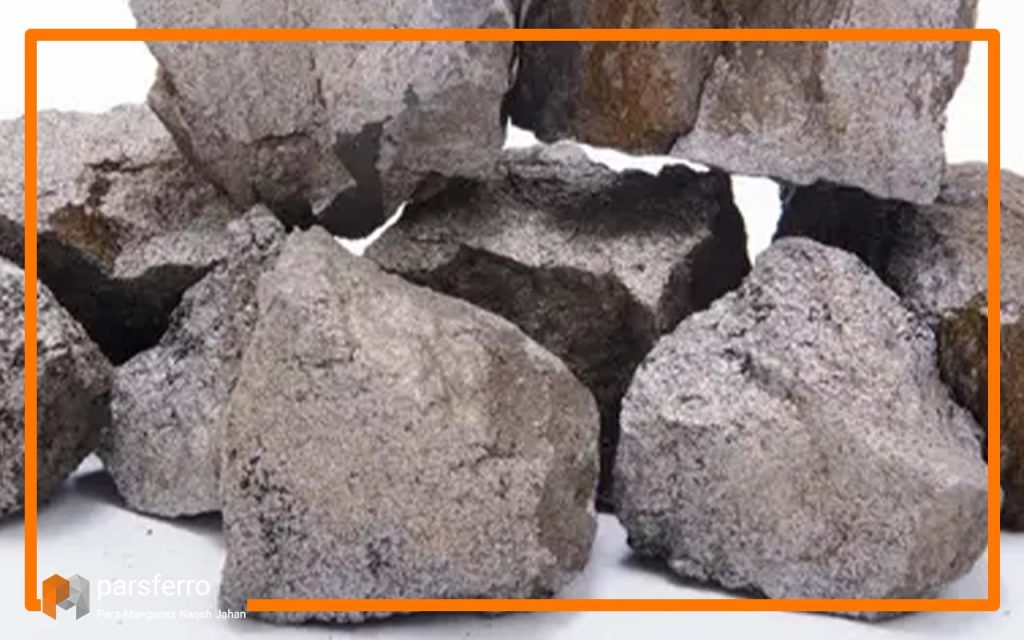
1. silico manganese 6014
This grade indicates that the alloy must contain a minimum of 60% manganese, contributing to the alloy’s strength and hardness. The minimum silicon content of 14% enhances deoxidization and improves the alloy’s fluidity during the steelmaking process. Phosphorus and sulfur are limited to a maximum of 0.04%, ensuring the alloy meets quality standards and minimizing potential negative effects on steel properties.
2. Silico Manganese 6517
This grade contains a higher minimum manganese content compared to 6014, providing increased strength and wear resistance to the steel. The higher silicon content at 17% further enhances deoxidization and fluidity during steel production. The maximum phosphorus and sulfur content remain at 0.04%, ensuring adherence to quality standards.
3. Silico Manganese 6818
This grade features an even higher manganese content, contributing to superior strength and hardness in the final steel product. With a minimum silicon content of 18%, this grade offers enhanced deoxidization and fluidity during steel manufacturing. The phosphorus and sulfur content is limited to 0.04%, maintaining the alloy’s quality.
Note: The choice of a particular grade depends on the desired characteristics of the final steel product.
Physical properties of silico manganese
The most important physical properties of silico manganese are listed in the table below.
Table1. physical properties of silico manganese
| Property | Value/Range |
| Color | Metallic Gray |
| Odor | Typically Odorless |
| Melting Point | Depends on Composition, >1,150°C |
| Density | 6.7 to 7.1 g/cm³ |
High Carbon Silico Manganese (2-2.5% carbon max)
This variant has a higher carbon content, typically ranging from 2 to 2.5%. The increased carbon content contributes to higher hardness and strength in the steel.
Medium Carbon Silico Manganese (0.5% max)
This variant has a moderate carbon content, with a maximum of 0.5%. It strikes a balance between the hardness and strength provided by carbon and the potential brittleness associated with higher carbon levels. Medium carbon silico manganese is often used in applications where a good balance between strength and toughness is required.
Low Carbon Silico Manganese (0.1-0.2% max)
This variant has a lower carbon content, typically ranging from 0.1 to 0.2%. The reduced carbon content helps in minimizing the brittleness of the steel. Low carbon silico manganese is suitable for applications where enhanced ductility and weldability are important, and excessive hardness is not a primary requirement.
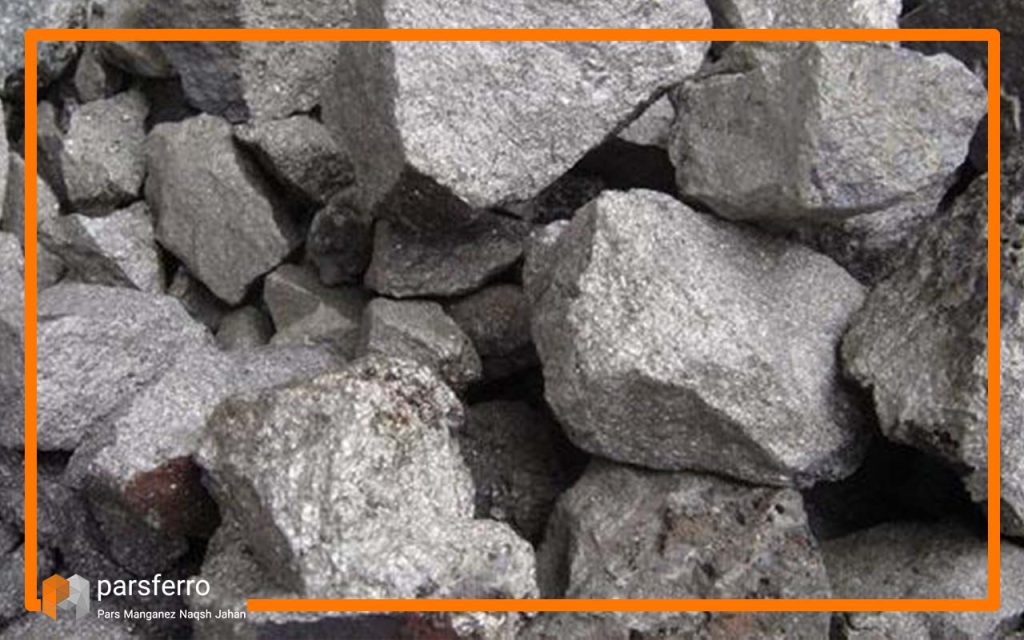
Silico manganese production process
Silico manganese (Si-Mn) is an alloy composed of manganese, silicon, and iron. It is used in the production of steel and is particularly valued for its ability to increase the strength and durability of steel. The production process of silico manganese involves the following steps:
1- Selection of Raw Material
- Manganese Ore: High-grade manganese ore is the primary source of manganese. The ore should have a high manganese content and low iron and P2O5 content.
- Quartz (Silica): High-quality quartz is used as a source of silicon.
- Coke or Coal: These are used as carbon sources and reduce magnesium oxide
another process
2. Smelting Process
The raw materials, including manganese ore, silica, and coke or coal, are mixed in appropriate proportions. The mixture is then fed into an electric arc furnace or submerged arc furnace, which is the primary equipment for smelting silico manganese. In the furnace, an electric current passes through electrodes, creating an arc. This arc generates high temperatures, causing the reduction of manganese oxide in the ore to manganese metal. The silicon present in the quartz reacts with the manganese to form silico manganese.
3. Refining Process
The smelted alloy undergoes a refining process to remove impurities. This may involve processes such as blowing oxygen through the molten metal to oxidize and remove unwanted elements. To meet the desired specifications, one adjusts the composition of the alloy.
4. Casting
Following refining, individuals cast the molten silicomanganese into various shapes, such as ingots or other forms, based on the end-use requirements.
5. Cooling and Crushing
The cast silicomanganese is allowed to cool and solidify. The solidified material is then crushed into smaller pieces or granules for easier handling and further processing.
6. Packaging and Shipping
The final product is packaged into appropriate containers or shipped in bulk, depending on customer requirements.
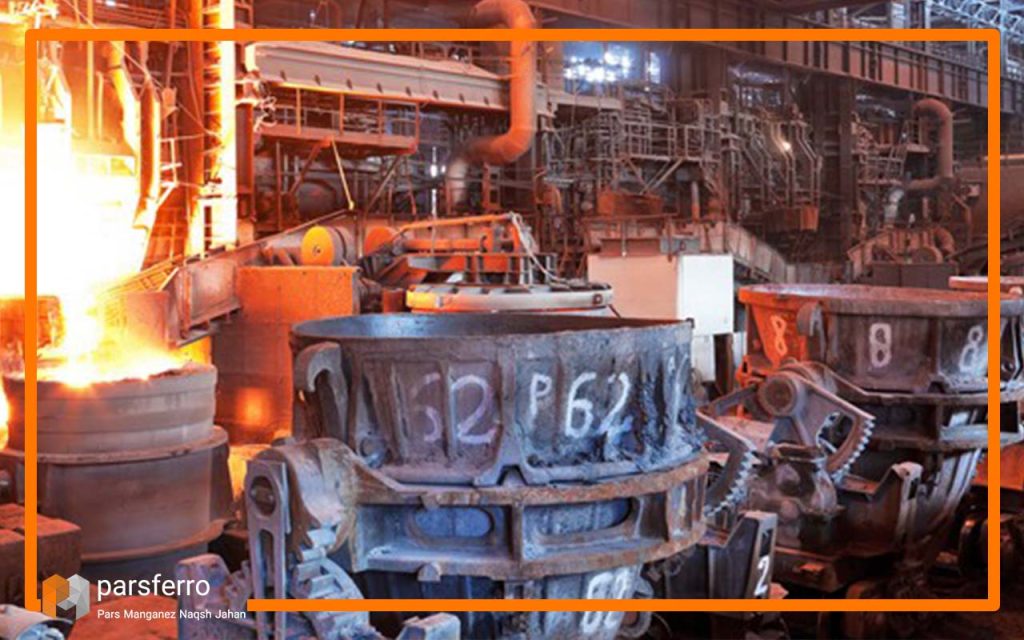
Silico manganese uses in steel production
- Strength and Toughness: Silico manganese enhances the strength and toughness of steel. The addition of manganese increases hardenability, making steel more resistant to wear and abrasion. This alloy is particularly beneficial in the production of high-strength low-alloy (HSLA) steels.
- Deoxidizing Agent: Silicon in silico manganese acts as a powerful deoxidizing agent. It helps remove oxygen from the molten steel, reducing the presence of oxides and improving the overall quality of the steel.
- Desulfurization: Silico manganese also aids in the desulfurization of steel. Manganese readily combines with sulfur to produce manganese sulfide, allowing easy removal from the steel. This is crucial in producing high-quality, low-sulfur steel.
- Alloying Element: The alloying properties of silico manganese make it an effective addition to steel, improving its overall performance and making it suitable for a wide range of applications.
- Graphitization: Silicon in silico manganese acts as a catalyst for graphitization, a process that transforms carbon from its iron carbide form into free graphite. This phenomenon enhances the machinability and ductility of the cast iron. The presence of free graphite in the microstructure imparts a distinct grey color to the iron, characteristic of grey cast iron.
read more: silico manganese uses
What is the difference between silicomanganese and ferromanganese?
silicomanganese and ferromanganese are both essential alloys in metallurgy, primarily used in the production of steel. The key distinction between these two alloys lies in their composition, specifically in terms of the elements they contain. Both alloys are crucial in steelmaking, but their specific applications can vary based on the desired properties in the final steel product. Industries often use this alloy when they need to enhance strength and toughness, while opting for silicomanganese due to its corrosion resistance and deoxidizing properties.
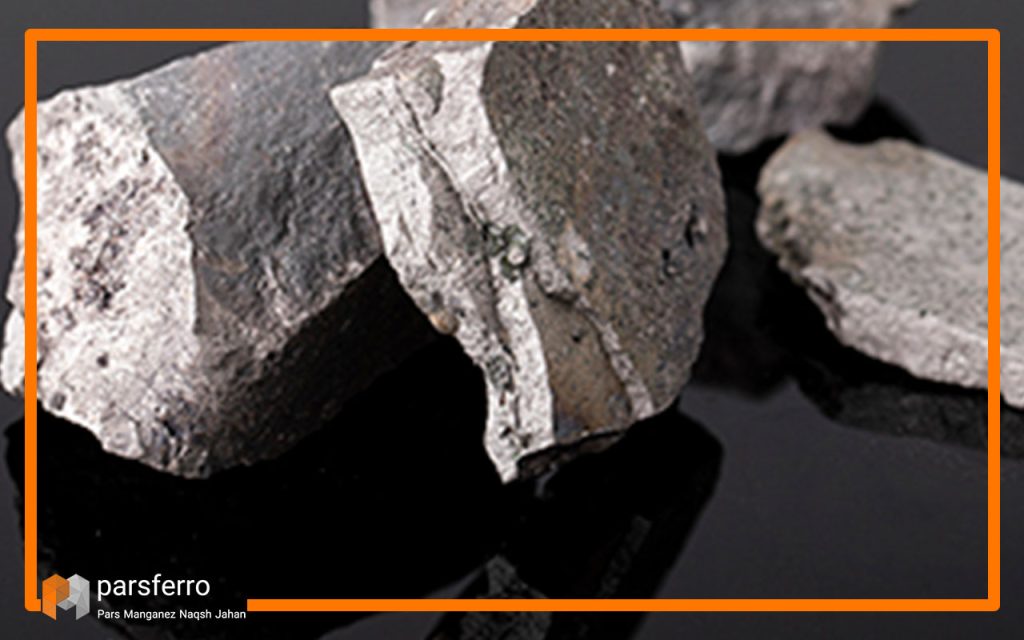
Ferromanganese
Ferromanganese is a manganese alloy that is primarily composed of manganese and iron, often with a certain proportion of carbon. This alloy plays a crucial role in steelmaking as it imparts desirable properties to the final product. The inclusion of iron ensures that ferromanganese contributes to the overall strength and toughness of the steel. The carbon content in ferromanganese can vary, and its presence influences the alloy’s hardness and other mechanical characteristics.
read more: what is ferromanganese alloy?
Silicomanganese
On the other hand, silicomanganese is another type of manganese alloy, but its distinctive feature is the presence of silicon along with manganese and, once again, a certain amount of carbon as we mentioned in this article. The addition of silicon aids in deoxidizing and desulfurizing the steel during the manufacturing process. One can adjust the carbon content in silicomanganese, similar to ferromanganese, to meet specific metallurgical requirements.
Conclusion
In conclusion, silicomanganese is a vital alloy in the steelmaking industry, contributing to the production of high-quality steel with improved mechanical properties. Its versatility and beneficial characteristics make it a key component in various applications, from construction to automotive and transportation industries. As technology and industry continue to evolve, the demand for silico manganese is likely to persist, playing a crucial role in the development of advanced and resilient materials.

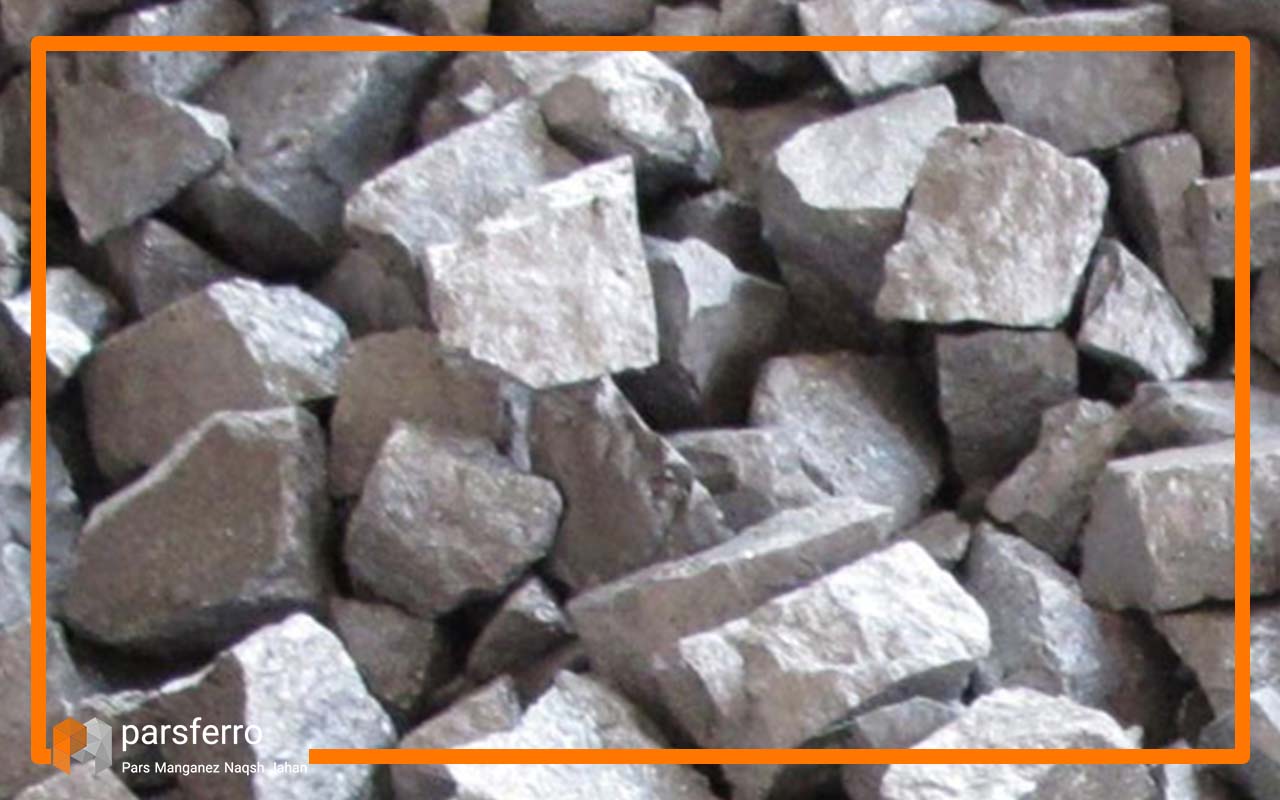
No comment